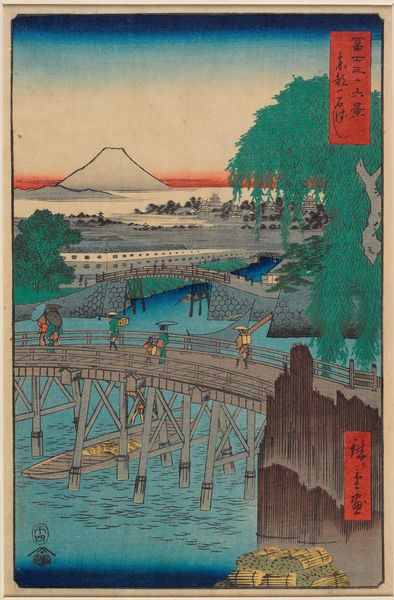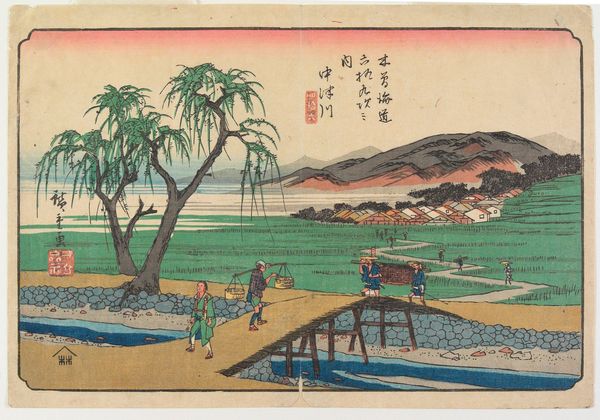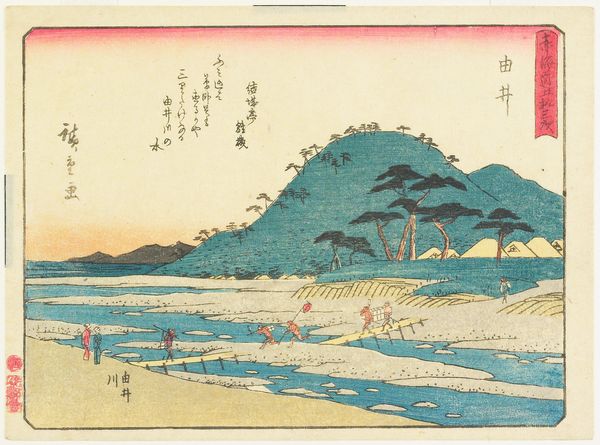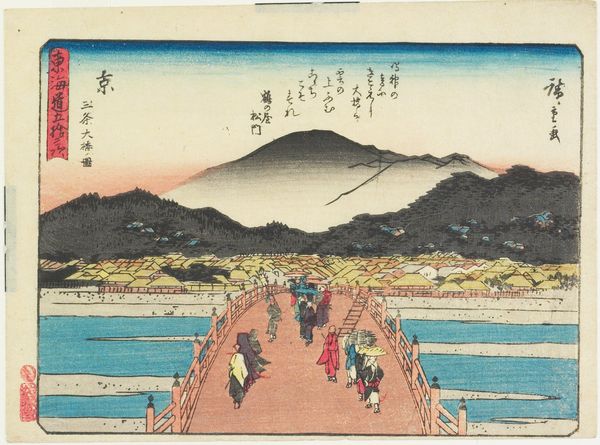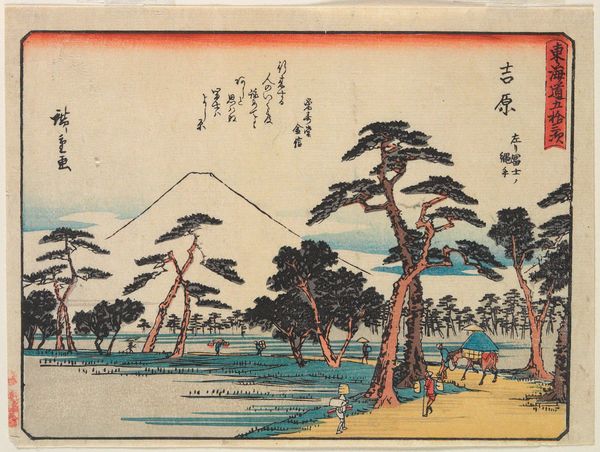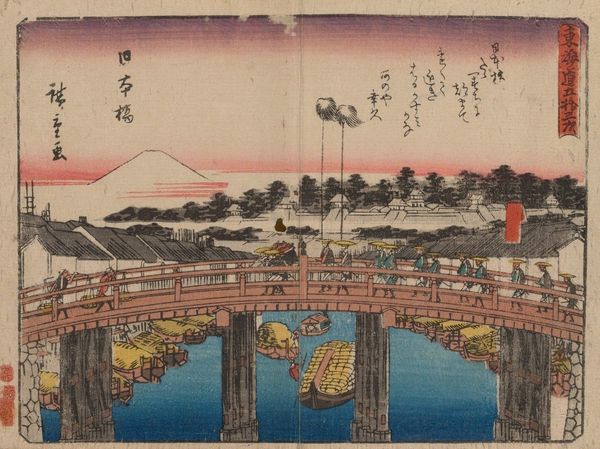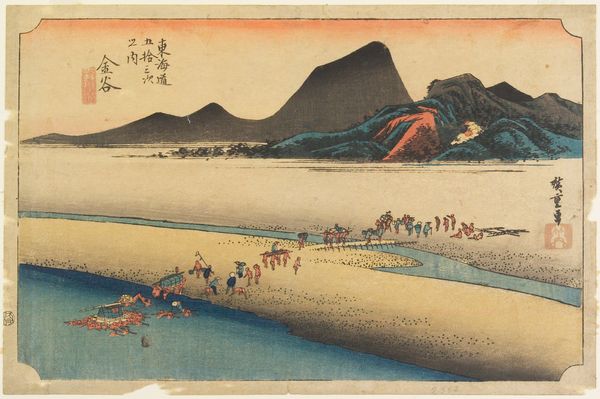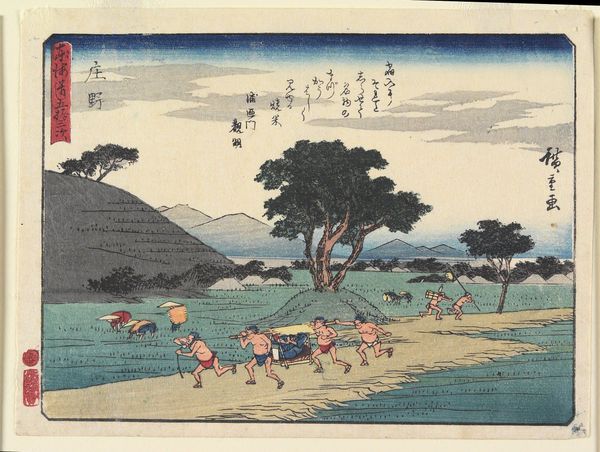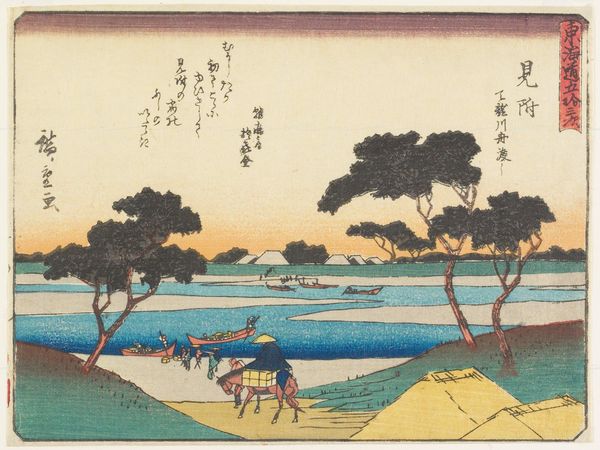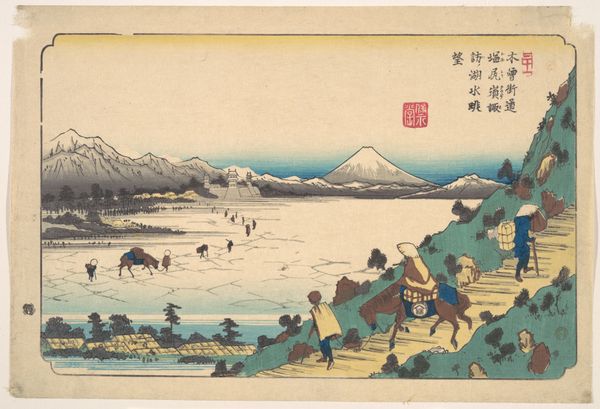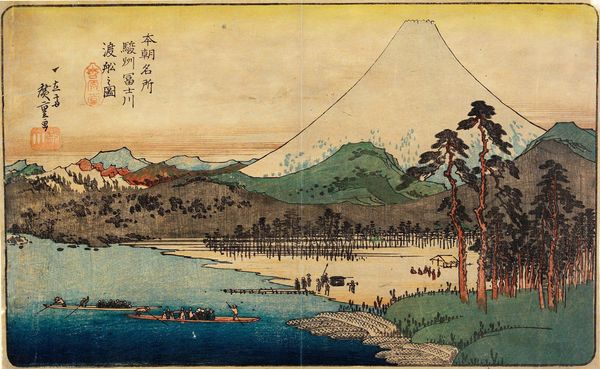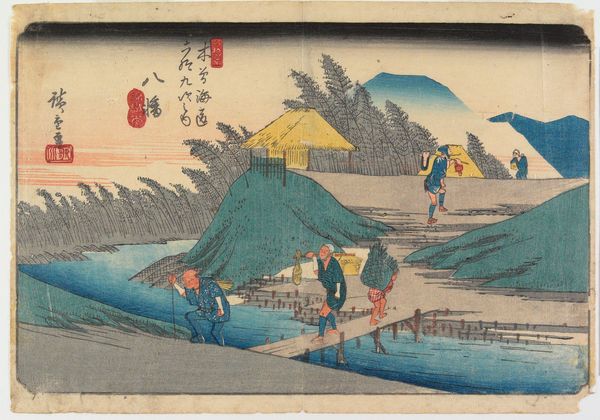
print, etching, ink, woodblock-print
#
ink painting
# print
#
etching
#
asian-art
#
landscape
#
ukiyo-e
#
ink
#
woodblock-print
#
orientalism
Dimensions: 8 1/2 x 13 5/8 in. (21.6 x 34.6 cm) (image)8 1/2 x 13 5/8 in. (21.6 x 34.6 cm) (sheet, trimmed)
Copyright: Public Domain
Curator: Here we have "No.Okazaki," a captivating woodblock print created by Utagawa Hiroshige, sometime between 1847 and 1852. Editor: My initial response is one of tranquility, despite the implied journey taking place. The pastel hues create a serene, almost dreamlike atmosphere. Curator: Indeed. Hiroshige's strategic use of color—note the subtle gradations in the sky and water—certainly evokes that sense of calm. It's interesting how he utilizes line, the rhythmic repetition in the reeds creating depth and movement within the flat plane. The linear perspective of the bridge too draws the eye effectively. Editor: Thinking historically, what kind of role did these prints play in society back then? Beyond pure aesthetic appreciation, did they serve another purpose? I'm thinking in terms of a wider social and cultural function. Curator: Ukiyo-e prints, like this one, flourished in the Edo period. They became widely accessible due to woodblock printing. "No.Okazaki" offers more than just a pretty picture. These images depicted popular landscapes, becoming souvenirs of a sort. In effect they democratized access to scenery otherwise enjoyed mostly by the wealthy elite. Consider that in the 19th century a growing middle class could imagine travelling. Editor: So in that sense these prints became documents shaping and reflecting desires. How did the institutional system around them reinforce specific aesthetic ideals or perhaps even social structures? Was there an existing network of art dealers? How might viewers have perceived "value"? Curator: There was indeed a network of publishers and dealers who played a crucial role in determining what prints were made and sold. Certain artists and styles rose in prominence due to their market appeal. The market was very much shaped by its interaction with the existing hierarchy. The value extended past sheer aesthetics, becoming symbols of access and aspiration, particularly in newly mobile and affluent middle classes. Editor: Understanding how these artworks became culturally significant helps appreciate more than the superficial aspects; it provides context to view each decision differently. Curator: Absolutely. Examining its formal elements along with historical considerations illuminates the richness and the complexity behind "No.Okazaki," shifting one’s perspective on art history itself. Editor: Well said, it moves it from only art to history.
Comments
No comments
Be the first to comment and join the conversation on the ultimate creative platform.
